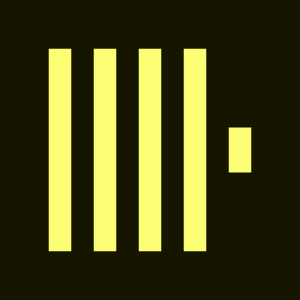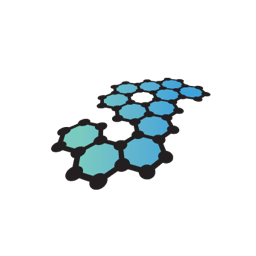ClickHouse vs Graphite
A detailed comparison
Compare ClickHouse and Graphite for time series and OLAP workloads
Learn About Time Series DatabasesChoosing the right database is a critical choice when building any software application. All databases have different strengths and weaknesses when it comes to performance, so deciding which database has the most benefits and the most minor downsides for your specific use case and data model is an important decision. Below you will find an overview of the key concepts, architecture, features, use cases, and pricing models of ClickHouse and Graphite so you can quickly see how they compare against each other.
The primary purpose of this article is to compare how ClickHouse and Graphite perform for workloads involving time series data, not for all possible use cases. Time series data typically presents a unique challenge in terms of database performance. This is due to the high volume of data being written and the query patterns to access that data. This article doesn’t intend to make the case for which database is better; it simply provides an overview of each database so you can make an informed decision.
ClickHouse vs Graphite Breakdown
 |
 |
|
| Database Model | Columnar database |
Time series database |
| Architecture | ClickHouse can be deployed on-premises, in the cloud, or as a managed service. |
Graphite can be deployed on-premises or in the cloud, and it supports horizontal scaling by partitioning data across multiple backend nodes. |
| License | Apache 2.0 |
Apache 2.0 |
| Use Cases | Real-time analytics, big data processing, event logging, monitoring, IoT, data warehousing |
Monitoring, observability, IoT, real-time analytics, DevOps, application performance monitoring |
| Scalability | Horizontally scalable, supports distributed query processing and parallel execution |
Horizontally scalable, supports clustering and replication for high availability and performance |
Looking for the most efficient way to get started?
Whether you are looking for cost savings, lower management overhead, or open source, InfluxDB can help.
ClickHouse Overview
ClickHouse is an open source columnar database management system designed for high-performance online analytical processing (OLAP) tasks. It was developed by Yandex, a leading Russian technology company. ClickHouse is known for its ability to process large volumes of data in real-time, providing fast query performance and real-time analytics. Its columnar storage architecture enables efficient data compression and faster query execution, making it suitable for large-scale data analytics and business intelligence applications.
Graphite Overview
Graphite is an open-source monitoring and graphing tool created in 2006 by Orbitz and open sourced in 2008. Graphite is designed for storing time series data and is widely used for collecting, storing, and visualizing metrics from various sources, such as application performance, system monitoring, and business analytics.
ClickHouse for Time Series Data
ClickHouse can be used for storing and analyzing time series data effectively, although it is not explicitly optimized for working with time series data. While ClickHouse can query time series data very quickly once ingested, it tends to struggle with very high write scenarios where data needs to be ingested in smaller batches so it can be analyzed in real time.
Graphite for Time Series Data
Graphite is specifically designed and optimized for time series data. It uses the Whisper database format, which efficiently stores and manages time series data by automatically aggregating and expiring data based on user-defined retention policies. Graphite supports a wide range of functions for querying, transforming, and aggregating time series data, enabling users to create custom graphs and dashboards. However, as Graphite focuses exclusively on time series data, it may not be suitable for other types of data or use cases that require more advanced data modeling or querying capabilities.
ClickHouse Key Concepts
- Columnar storage: ClickHouse stores data in a columnar format, which means that data for each column is stored separately. This enables efficient compression and faster query execution, as only the required columns are read during query execution.
- Distributed processing: ClickHouse supports distributed processing, allowing queries to be executed across multiple nodes in a cluster, improving query performance and scalability.
- Data replication: ClickHouse provides data replication, ensuring data availability and fault tolerance in case of hardware failures or node outages.
- Materialized Views: ClickHouse supports materialized views, which are precomputed query results stored as tables. Materialized views can significantly improve query performance, as they allow for faster data retrieval by avoiding the need to recompute the results for each query.
Graphite Key Concepts
- Metric: A metric in Graphite represents a time series data point, consisting of a path (name), timestamp, and value.
- Series: A series is a collection of metrics that are all related to the same thing. For example, you might have a series for CPU usage, a series for memory usage, and a series for disk usage.
- Whisper: Whisper is a fixed-size, file-based time series database format used by Graphite. It automatically manages data retention and aggregation.
- Carbon: Carbon is the daemon responsible for receiving, caching, and storing metrics in Graphite. It listens for incoming metrics and writes them to Whisper files.
- Graphite-web: Graphite-web is the web application that provides a user interface for visualizing and querying the stored time series data.
ClickHouse Architecture
ClickHouse’s architecture is designed to support high-performance analytics on large datasets. ClickHouse stores data in a columnar format. This enables efficient data compression and faster query execution, as only the required columns are read during query execution. ClickHouse also supports distributed processing, which allows for queries to be executed across multiple nodes in a cluster. ClickHouse uses the MergeTree storage engine as its primary table engine. MergeTree is designed for high-performance OLAP tasks and supports data replication, data partitioning, and indexing.
Graphite Architecture
Graphite’s architecture consists of several components, including Carbon, Whisper, and Graphite-web. Carbon is responsible for receiving metrics from various sources, caching them in memory, and storing them in Whisper files. Whisper is a file-based time series database format that efficiently manages data retention and aggregation. Graphite-web is the web application that provides a user interface for querying and visualizing the stored time series data. Graphite can be deployed on a single server or distributed across multiple servers for improved performance and scalability.
Free Time-Series Database Guide
Get a comprehensive review of alternatives and critical requirements for selecting yours.
ClickHouse Features
Real-time analytics
ClickHouse is designed for real-time analytics and can process large volumes of data with low latency, providing fast query performance and real-time insights.
Data compression
ClickHouse’s columnar storage format enables efficient data compression, reducing storage requirements and improving query performance.
Materialized views
ClickHouse supports materialized views, which can significantly improve query performance by precomputing and storing query results as tables.
Graphite Features
Real-time monitoring and visualization
Graphite provides real-time monitoring and visualization capabilities, allowing users to track and analyze their time series data as it is collected.
Flexible querying and aggregation functions
Graphite supports a wide range of functions for querying, transforming, and aggregating time series data, enabling users to create custom graphs and dashboards tailored to their specific needs.
Data retention and aggregation
Graphite’s Whisper database format automatically manages data retention and aggregation, reducing storage requirements and improving query performance.
ClickHouse Use Cases
Large-scale data analytics
ClickHouse’s high-performance query engine and columnar storage format make it suitable for large-scale data analytics and business intelligence applications.
Real-time reporting
ClickHouse’s real-time analytics capabilities enable organizations to generate real-time reports and dashboards, providing up-to-date insights for decision-making.
Log and event data analysis
ClickHouse’s ability to process large volumes of data in real-time makes it a suitable choice for log and event data analysis, such as analyzing web server logs or application events.
Graphite Use Cases
Application performance monitoring
Graphite is widely used for monitoring the performance of applications and services, helping developers and operations teams track key metrics, such as response times, error rates, and resource utilization. By visualizing these metrics in real-time, users can identify performance bottlenecks, detect issues, and optimize their applications for better performance and reliability.
Infrastructure and system monitoring
Graphite is also popular for monitoring the health and performance of servers, networks, and other infrastructure components. By collecting and analyzing metrics such as CPU usage, memory consumption, network latency, and disk I/O, IT administrators can ensure their infrastructure is running smoothly and proactively address potential issues before they impact system performance or availability.
Business analytics and metrics
In addition to technical monitoring, Graphite can be used for tracking and visualizing business-related metrics, such as user engagement, sales data, or marketing campaign performance. By visualizing and analyzing these metrics over time, business stakeholders can gain insights into trends, identify opportunities for growth, and make data-driven decisions to improve their operations.
ClickHouse Pricing Model
ClickHouse is an open source database and can be deployed on your own hardware. The developers of ClickHouse have also recently created ClickHouse Cloud which is a managed service for deploying ClickHouse.
Graphite Pricing Model
Graphite is an open-source project, and as such, it is freely available for users to download, install, and use without any licensing fees. However, users are responsible for setting up and maintaining their own Graphite infrastructure, which may involve costs related to server hardware, storage, and operational expenses. There are also several commercial products and services that build on top of or integrate with Graphite, offering additional features, support, or managed hosting options at varying price points.
Get started with InfluxDB for free
InfluxDB Cloud is the fastest way to start storing and analyzing your time series data.
